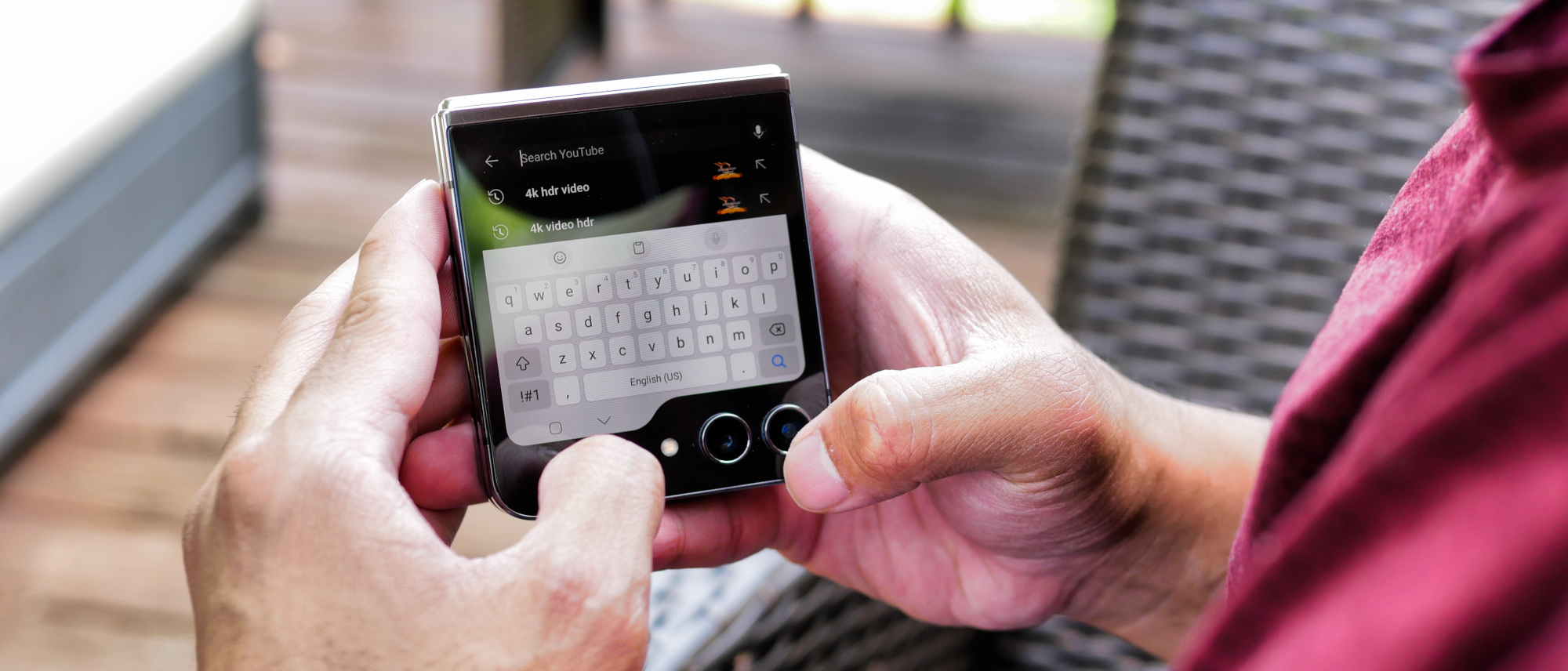Tom's Guide Verdict
The collective improvements may not be a giant leap for foldables, but they're enough to propel the Samsung Galaxy Z Flip 5 back into the conversation with its longer battery life, more usable Flex Window and outstanding cameras.
Pros
- +
Larger, more usable Flex Window
- +
Outstanding camera performance
- +
No gap design
- +
Double the storage with base model
Cons
- -
Limited full apps on Flex Windows
- -
Battery life could be better
Why you can trust Tom's Guide
It's hard to imagine that foldable phones have been commercially available as far back as 2018. Samsung's been one of the leaders in the space, and you could argue that no one else comes close to matching its experience and expertise in the area. With its fourth generation foldable, the Samsung Galaxy Z Flip 5, it perfectly showcases how far its designs have come since the original one launched.
While the company had a solid start, we've seen how its once tight grip in the market has slowly become loose. Naturally, the Galaxy Z Flip 5 gains all the right upgrades to make it a top contender for one of the best smartphones this year. With its refreshed design, faster processor, and larger external screen, this foldable is looking to take back the crown after the Motorola Razr+ showed up to snatch the crown from its predecessor in the Galaxy Z Flip 4 when I pitted the two in a face-to-face comparison not long ago.
In order for Samsung to reclaim its crown in this clamshell foldable space, its new phone needs to hit a home run because anything less won't leave a lasting impression. In my Samsung Galaxy Z Flip 5 review, you'll see if all the new upgrades result in making it the foldable clamshell phone to beat heading into the upcoming holiday season.
There's also my Samsung Galaxy Z Flip 5 versus Motorola Razr+ face-off that reveals the superior one. Motorola's come a long way, especially when you take into consideration the disappointing results with its past foldable, but Samsung intends to continue being king in this area.
Samsung Galaxy Z Flip 5 review: Specs
| Row 0 - Cell 0 | Galaxy Z Flip 5 |
| Starting price | $999 / £1,049 |
| Inner Display | 6.7-inch FHD+ (2640 x 1080) Dynamic AMOLED 2X, 22:9 aspect ratio |
| Outer Display | 3.4-inch 720 x 748 Super AMOLED |
| Refresh rate | Up to 120Hz (Inner), 60Hz (Outer) |
| Chipset | Snapdragon 8 Gen 2 |
| RAM | 8GB |
| Storage | 256GB/512GB |
| Rear cameras | 12MP f/1.8 main (83 ̊ FOV) + 12MP f/2.2 ultra-wide (123 ̊ FOV) |
| Selfie camera | 10MP F2.2, 85 ̊ FOV |
| Battery | 3,700 mAh |
| Size | 3.35 x 2.83 x 0.59-inches (folded), 6.5 x 2.83 x 0.27-inches (unfolded) |
| Weight | 6.6oz (187 grams) |
| Colors | Mint, Graphite, Cream, Lavender, Gray, Blue, Green, Yellow |
Samsung Galaxy Z Flip review: Price and availability
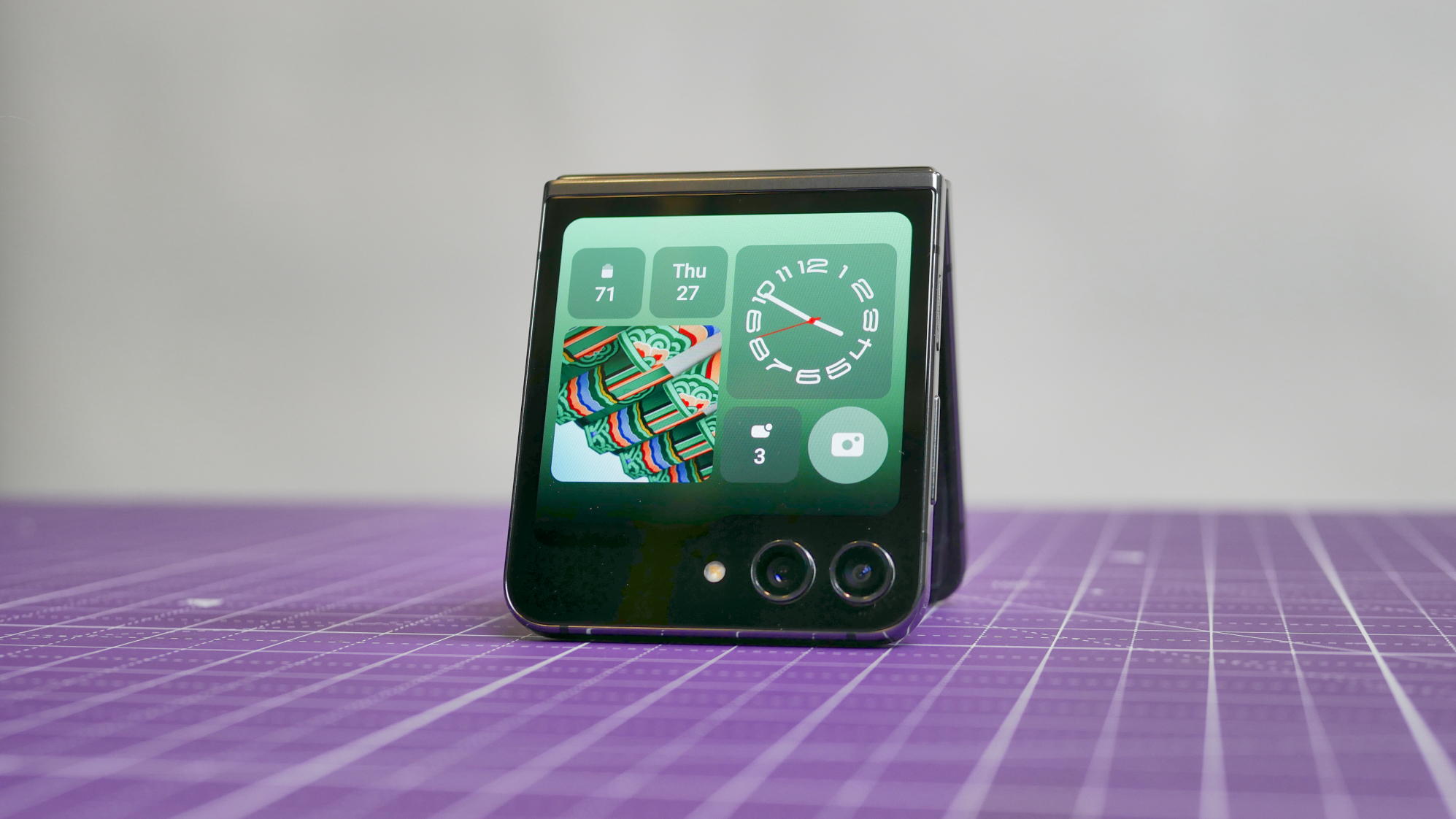
Just as before, you'll pay $999 to buy the Samsung Galaxy Z Flip 5. While its price is unchanged, Samsung generously doubles the storage capacity of the base model. Now it comes with 256GB of storage, up from the Flip 4's capacity of 128GB. If you need more, there’s also the 512GB model at
Pre-orders are already available, but it'll be on sale in stores starting August 11, 2023. The Samsung Galaxy Z Flip 5 is broadly available in the following colors: mint, graphite, cream, and lavender. You'll also find it in gray, blue, green, and yellow, but these are exclusively available through Samsung directly.
Strangely, Samsung said that there won’t be a Bespoke edition of the foldable this time — which could be the result of its larger sized outer display. It’s a bummer for sure since the Bespoke editions gave people a way of customizing the design, however Samsung's first cheaper foldable phone could arrive next year which would be interesting. (For more ways to save, check out our guide to today's best Samsung promo codes).
Samsung Galaxy Z Flip 5 review: Design
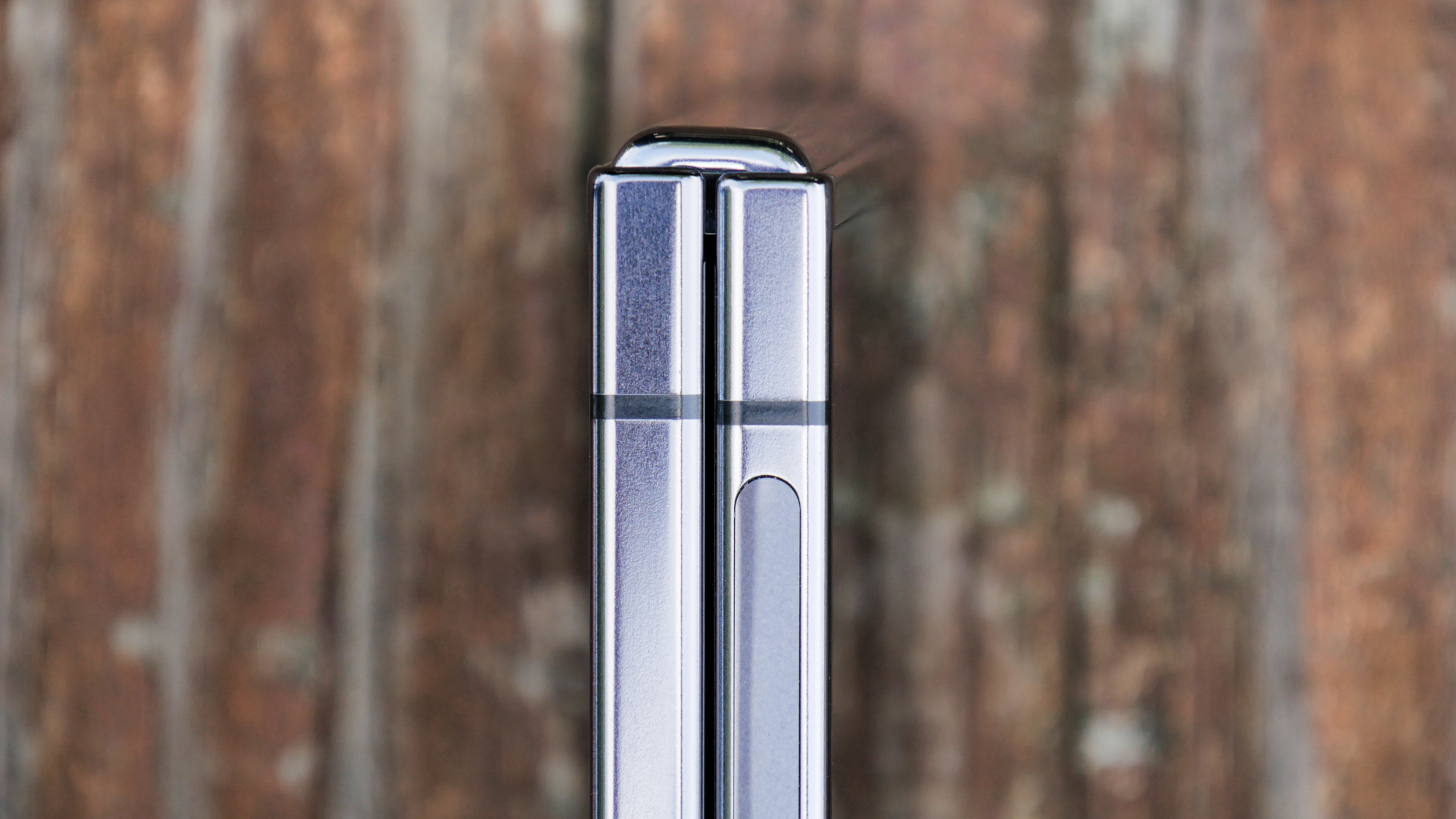
While I was never annoyed by the gap produced by the Galaxy Z Flip 4’s hinge, I can appreciate Samsung’s commitment to chasing after perfection with a new gapless design. That’s one of the first changes I noticed while closing the Galaxy Z Flip 5.
It’s a refinement that brings the phone’s design to match key rivals such as the Motorola Razr+ and Oppo Find N2 Flip, both of which beat Samsung to the punch with gapless designs. It’s a stylish design that retains the same 0.27-inch profile as before, but I wouldn’t go out on a limb to say it’s a better looking phone than the Razr+.
From what I can see, the crease isn't as prominent as the one on my Z Flip 3. But to be fair, its deeper crease is a result of using it for close to a year. Compared to the Razr+, I am actually surprised that the crease is even less prominent with Motorola's foldable.
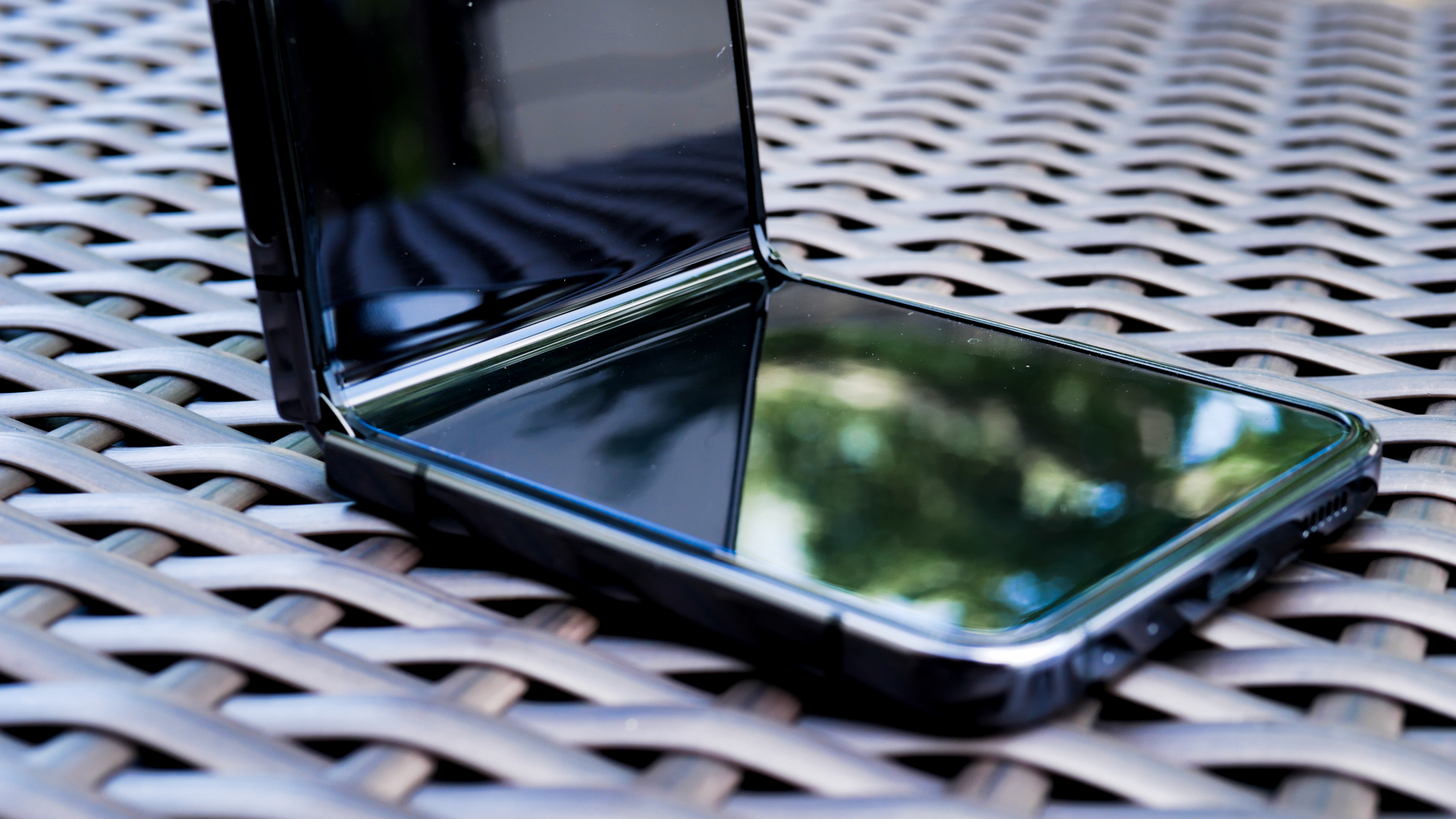
Nevertheless, the Galaxy Z Flip 5 feels well constructed with that satisfying snap shut closure of the new hinge mechanism. My only complaint about the design is that the graphite color of my Z Flip 5 review unit is a magnet for fingerprints with its glossy surfaces. In contrast, my Galaxy Z Flip 4 in Bora Purple had a matte finish that did better at hiding smudges.
There’s also no change to its water-resistant rating, which despite being at IPX8, continues to lead the way among foldables. I found it very similar in overall size and weight as its predecessor, but the most striking design change relates to its outer display.
Samsung Galaxy Z Flip 5 review: Displays
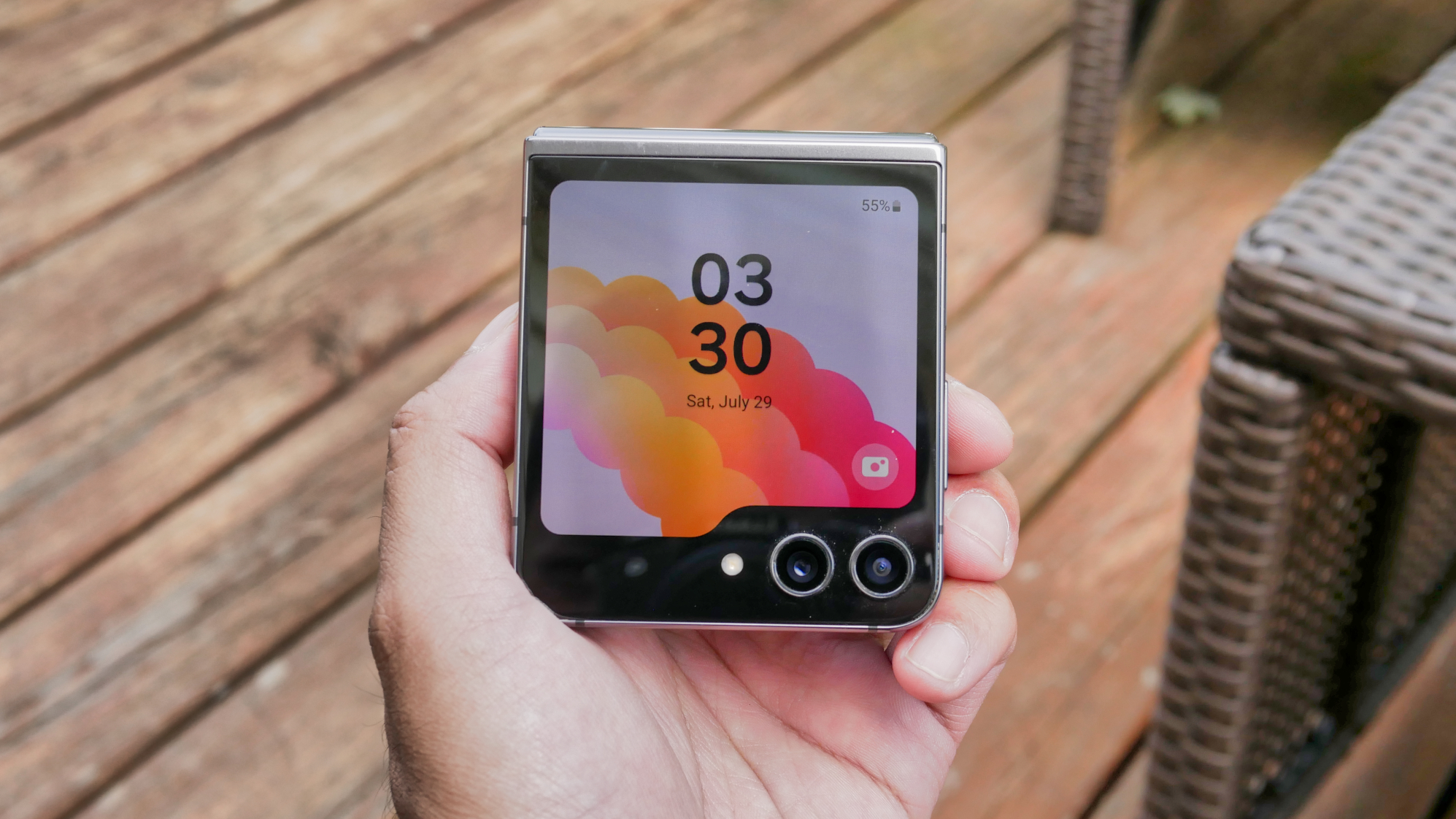
Samsung's cover screen has been a staple of the series since the original one launched in 2020. Since then, the small preview window slowly got larger — but was still a tiny strip reserved for notifications. Well, that all changes with the Z Flip 5 and its much larger Flex Window.
The new 3.4-inch Super AMOLED Flex Window of the Galaxy Z Flip 5 is striking and a much needed boost for the phone, seeing that it adds more utility than ever before. Its 720 x 748 resolution might be less than what the Razr+ offers, but the screen’s still polarizing to look at with its punch color tones and wide viewing angles. I actually like how it blends in with the design because it's hard to tell it's even there when it's off.
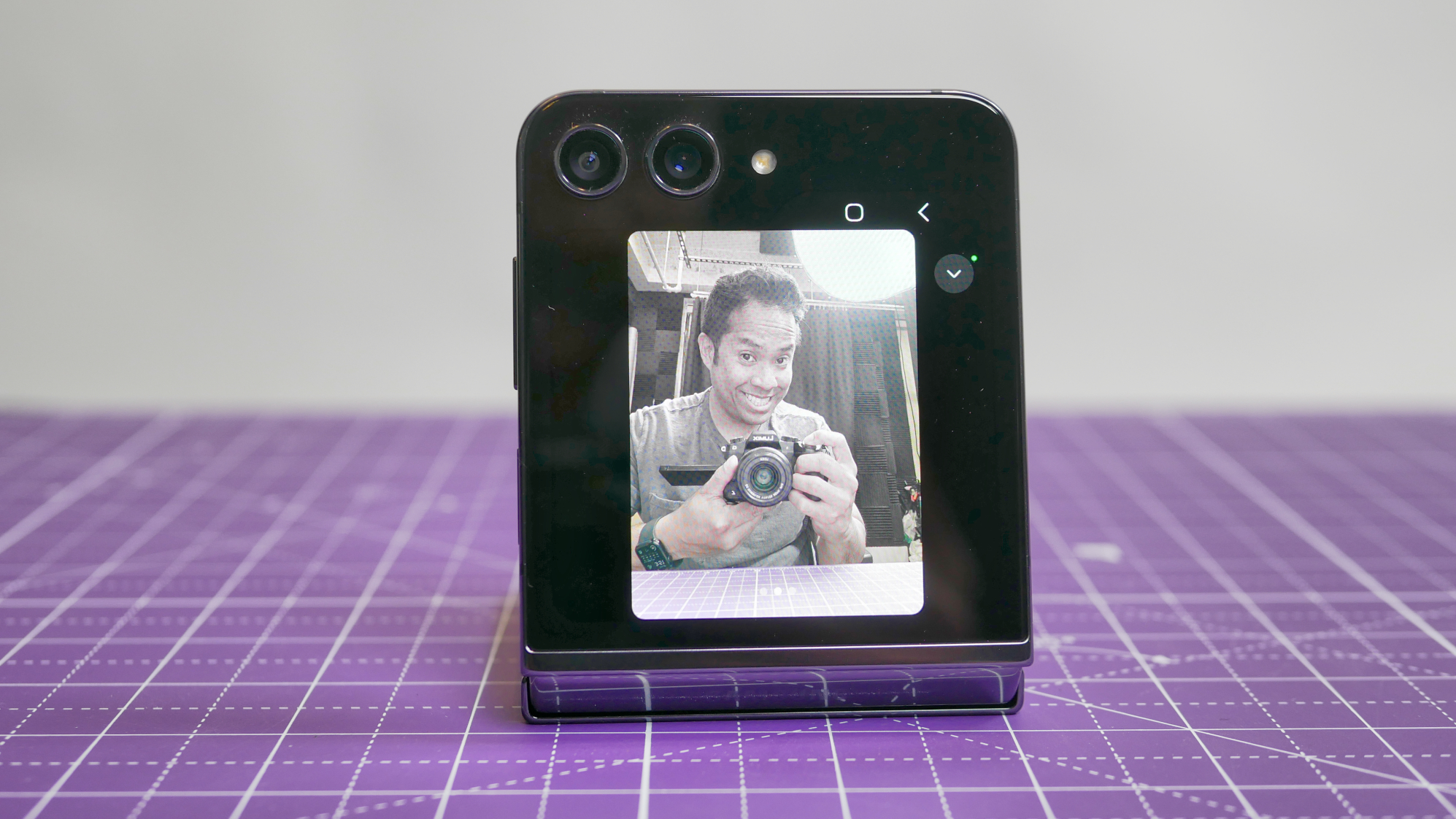
As I've said, the Flex Window shows off how the phone's matured over the 1.9-inch cover screen of the Galaxy Z Flip 4. Functionally, it's a night-and-day experience complete with widgets, some apps and better framing for capturing photos and videos. While support for full apps is limited to only a handful at the moment (Google Maps, Messages, Netflix, WhatsApp, and YouTube), I suspect that more will be added as time goes on. This is important because the Motorola Razr+ lets you run all apps through its outer screen.
Even with this limitation, I like how I'm able to send replies through the Flex Window under the notifications panel with different apps. For example, I could reply to messages in Slack and Instagram with the on-screen keyboard, which I found ample in size to type effortlessly.
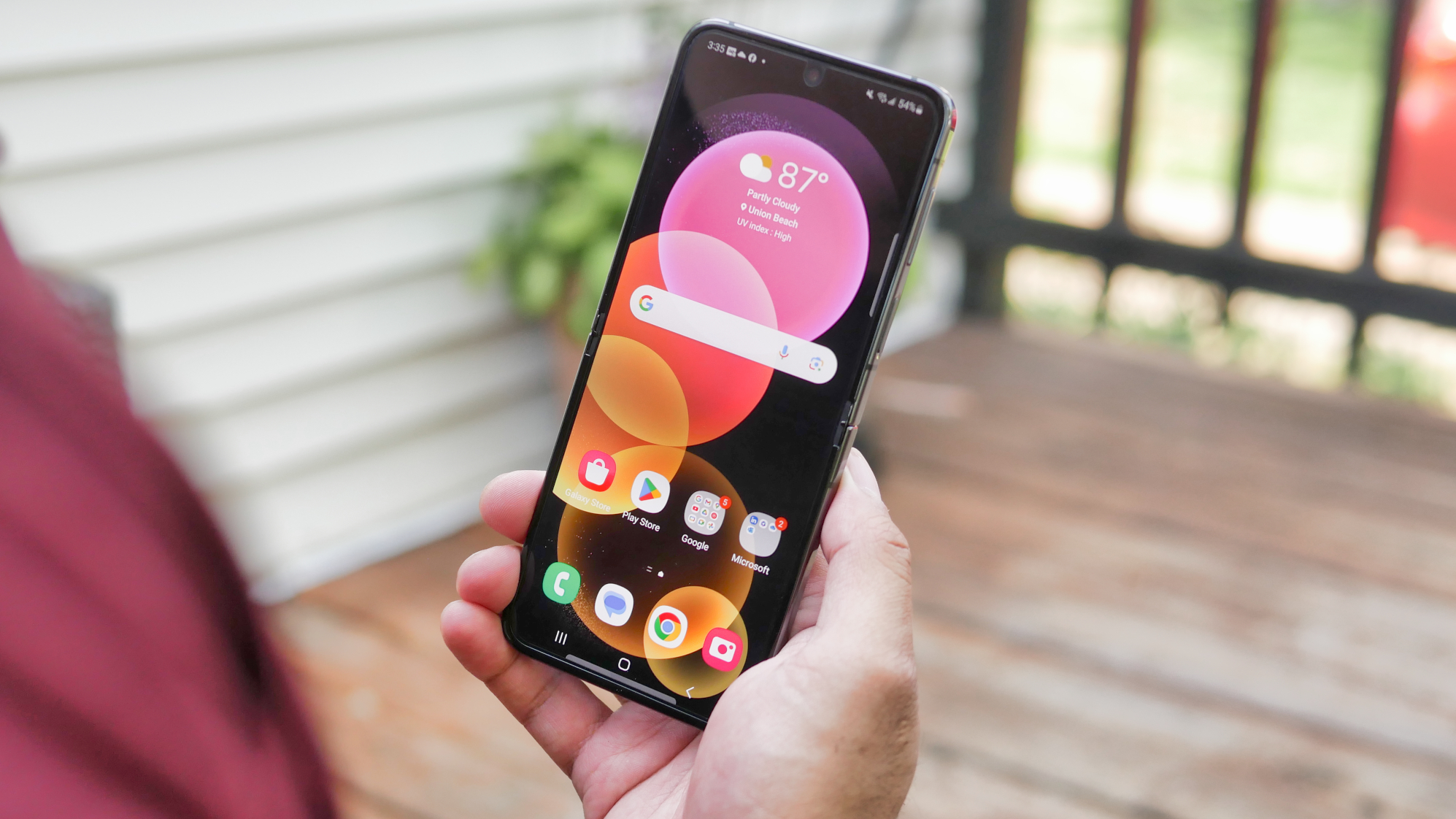
Apart from its new Flex Window, there wasn’t a whole lot different with its main 6.7-inch FHD+ (2640 x 1080) Dynamic AMOLED 2X display. It’s detailed, offers wide viewing angles, and has just enough punchiness to stand out. It still has a 22:9 screen aspect ratio, which I found easy to swipe left to right, but still needed to stretch my fingers to access its top corners.
| Row 0 - Cell 0 | Galaxy Z Flip 5 | Galaxy Z Flip 4 | Motorola Razr+ |
| Display size | 6.7-inch FHD+ (2640 x 1080) Dynamic AMOLED 2x | 6.7-inch FHD+ (2640 x 1080) Dynamic AMOLED 2X | 6.9-inch FHD+ (2640 x 1080) pOLED |
| sRGB (%) | 181.6 (Vivid) / 114 (Natural) | 188 (Vivid) / 110 (Natural) | 218.9 (Saturated) / 101.5% (Natural) |
| DCI-P3 (%) | 128.7 (Vivid) / 80.8 (Natural) | 132 (Vivid) / 78 (Natural) | 155.1 (Saturated) / 71.9 (Natural) |
| Delta-E | 0.08 (Vivid) / 0.28 (Natural) | 0.36 (Vivid) / 0.24 (Natural) | 0.35 (Saturated) / 0.22 (Natural) |
| Peak brightness (nits) | 1,504 | 772 | 1,084 |
I'm not hung up too much about the specs because Samsung's dramatically improves its brightness. In fact, the Galaxy Z Flip 5 reaches a peak brightness of 1,504 nits — easily surpassing its predecessor's mark of 772 nits.
The Razr+ meanwhile has a larger 6.9-inch pOLED display, but at the same resolution as the Flip 5. Even though this results in a lower pixel density on paper, I hardly could tell which of the two displays was more detailed. Using them outside, however, I'm still able to make out the Flip 5's bright screen in comparison to the Razr+ peak 1,04 nit brightness.
What's interesting is that the crease on the Flip 5 is more noticeable than with Razr+. I can also feel that there's less of a indentation with the Razr+'s crease. The deeper crease doesn't hinder my experience with the Z Flip 5, but it goes to show that Motorola's hinge design lessens it.
Samsung Galaxy Z Flip 5 review: Cameras
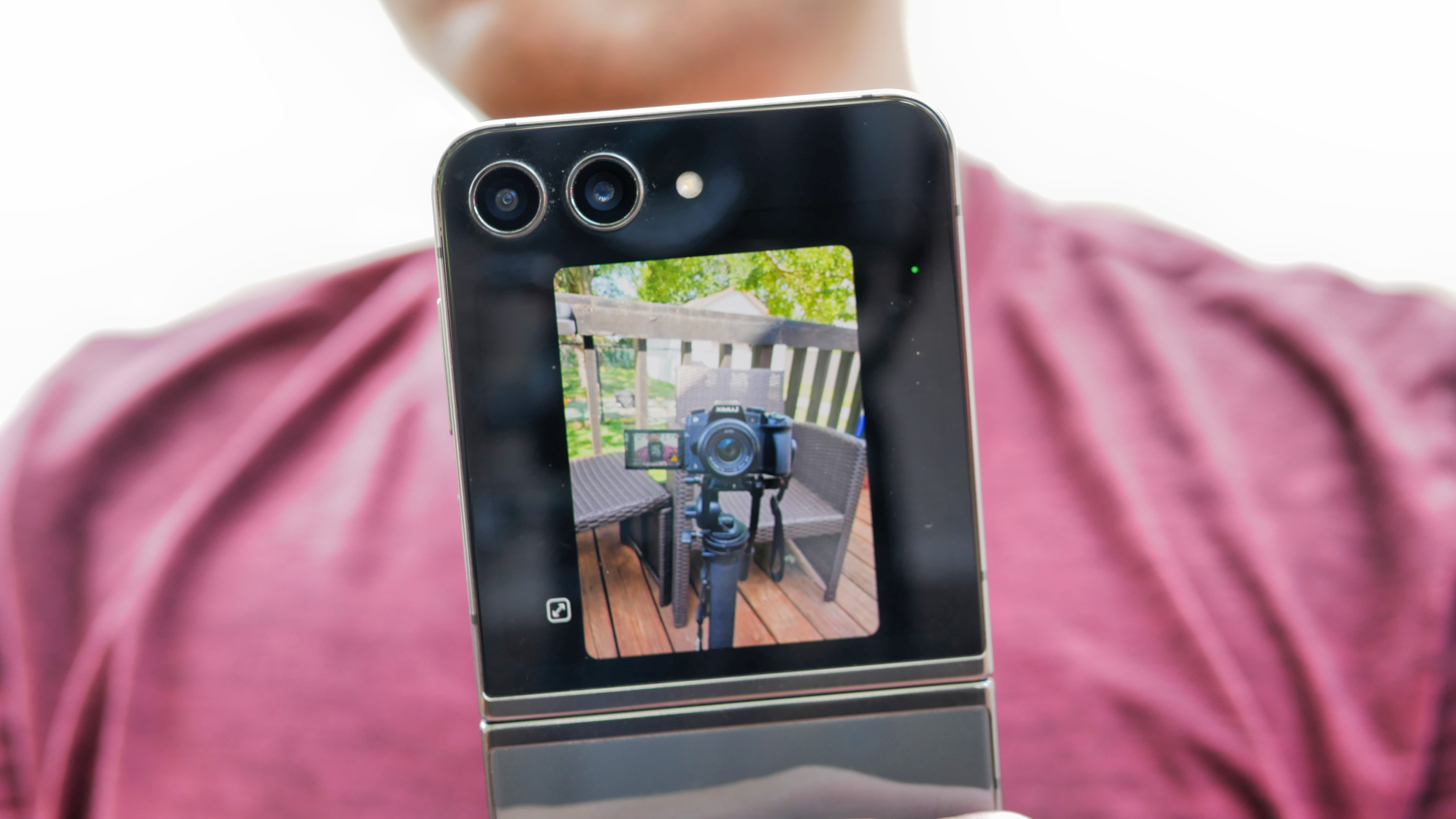
I can wish for a day when the Z Flip series finally gets a proper telephoto lens, but that’s not today. Instead, the Galaxy Z Flip 5 is a very similar dual-camera setup that consists of a 12-megapixel f/1.8 main camera and a 12-megapixel ultra wide angle f/2.2 camera. Sure, the specs aren’t too far off from last year’s foldable, but I will admit that the performance is improved — more so in one particular area, which I'll explain.
I can wish for a day when the Z Flip series finally gets a proper telephoto lens, but that’s not today.
The camera app is identical before, with extras like portrait video, hyperlapse, and director's view all present once again. I found capturing selfies and recording vlogs much easier because of its spacious Flex Window. No longer am I fussing around with the framing because I get to see the entire shot directly through the Flex Window. For this simple reason, I'm more apt to using it more.
When it comes down to quality, I'm surprised that the improvements were minimal at best for everyday shots taken under ideal lighting conditions. Capturing the same scene with the main camera, I'm hard pressed to see any meaningful gains with the Flip 5's shot above.
From what I can see, the exposure is better because the Z Flip 4 tends to lean over-exposed — as does the Razr+, its main rival. You can also see the superior dynamic range of the Z Flip 5 against the Razr+
I can say the same too when switching over to the 12-megapixel ultra wide-angle f/2.2 camera. It captures the same range as the Flip 4, but the Flip 5 again casts a better exposure.
Against the Razr+, I find the Flip 5's wide angle camera superior for both its wider field of view and punchier color tones, which you can see in the comparison shot above.
Samsung says that the Z Flip 5 leverages AI-powered image signal processing (ISP) algorithm to optimize photos, especially those taken under low light. You should know that's 100% true after I captured the same photos in extreme darkness against the Z Flip 4.
Don't get me wrong, the Z Flip 4 takes exceptional images under low light, but the Z Flip 5 receives the proper enhancements that makes it the better of the two. Leveraging the Z Flip 5's night mode, you can see how its shot is brighter and more detailed. It does tend to favor a warmer color production, but I still prefer it over the Z Flip 4.
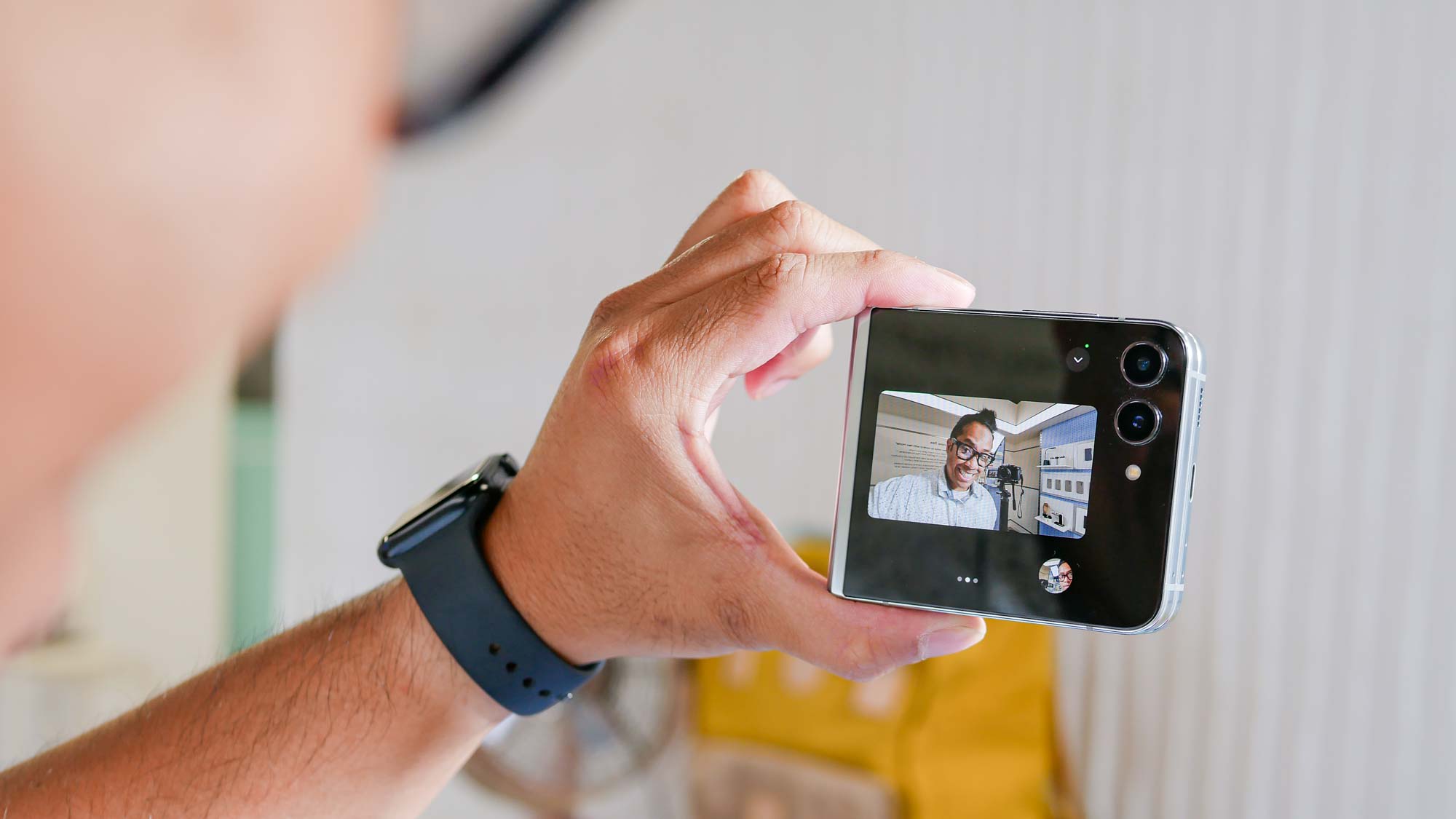
Capturing selfies is substantially improved too, since the larger Flex Window provides a better preview. Unlike its predecessor, there’s no crop when I record video — while providing the necessary visibility to get just the right composition. Nothing’s worse whenever I record self captures than not being able to see the entire preview of what I’m shooting.
I would recommend using the Flex Window and the rear cameras for selfies for the simple reason that the quality's better. However, if you opt to use the 10MP front-facing camera of the main display, it still produces favorable results over the Z Flip 4. Specifically, it's a tiny bit sharper and casts warmer color tones, which overall is my preference.
Portrait mode is better on the Flip 5, but not by much. That's because the only thing improved is how it detects edges. There are some areas of my hair and and ear that are blurred with the Flip 4's portrait mode, while the same areas clear with the Flip 5.
Compared to the Razr+, they both do a great job of detecting people and faces to apply that generous out of focus look to the background, but the Razr+ doesn't have as good of a dynamic range. You can see it in how the stripe pattern on the shirt is blown out in the image above.
As a videographer that religiously uses smartphones as B-cameras on professional shoots, I really like that the Z Flip 5 continues to offer manual video controls. This is one area where the competition has not been able to keep up with Samsung strangely enough, so it simply gives the Z Flip 5 an extra tool in its arsenal.
The improvements are again minimal with recording video, which tops out at 4K 60FPS. I'm able to discern the better dynamic performance of the Z Flip 5 against the Razr+ once again when comparing the footage. I notice it most in how the highlights are toned down to deliver a more balanced exposure, whereas they're blown out with the Razr+.
Another interesting tidbit is the way the Flip 5 optimizes photos taken with a digital zoom. Even though the results are obviously softer in tone, there's an over sharpening effect applied that makes it slightly clearer. While I wouldn't necessarily use the digital zoom a whole lot, you can confidently rely on it to get closer to your shots.
All told, the gains made by the Z Flip 5 are minimal at best, but nonetheless improved. Although the Samsung Galaxy Z Flip 6 might get a major camera upgrade.
Samsung Galaxy Z Flip 5 review: Software
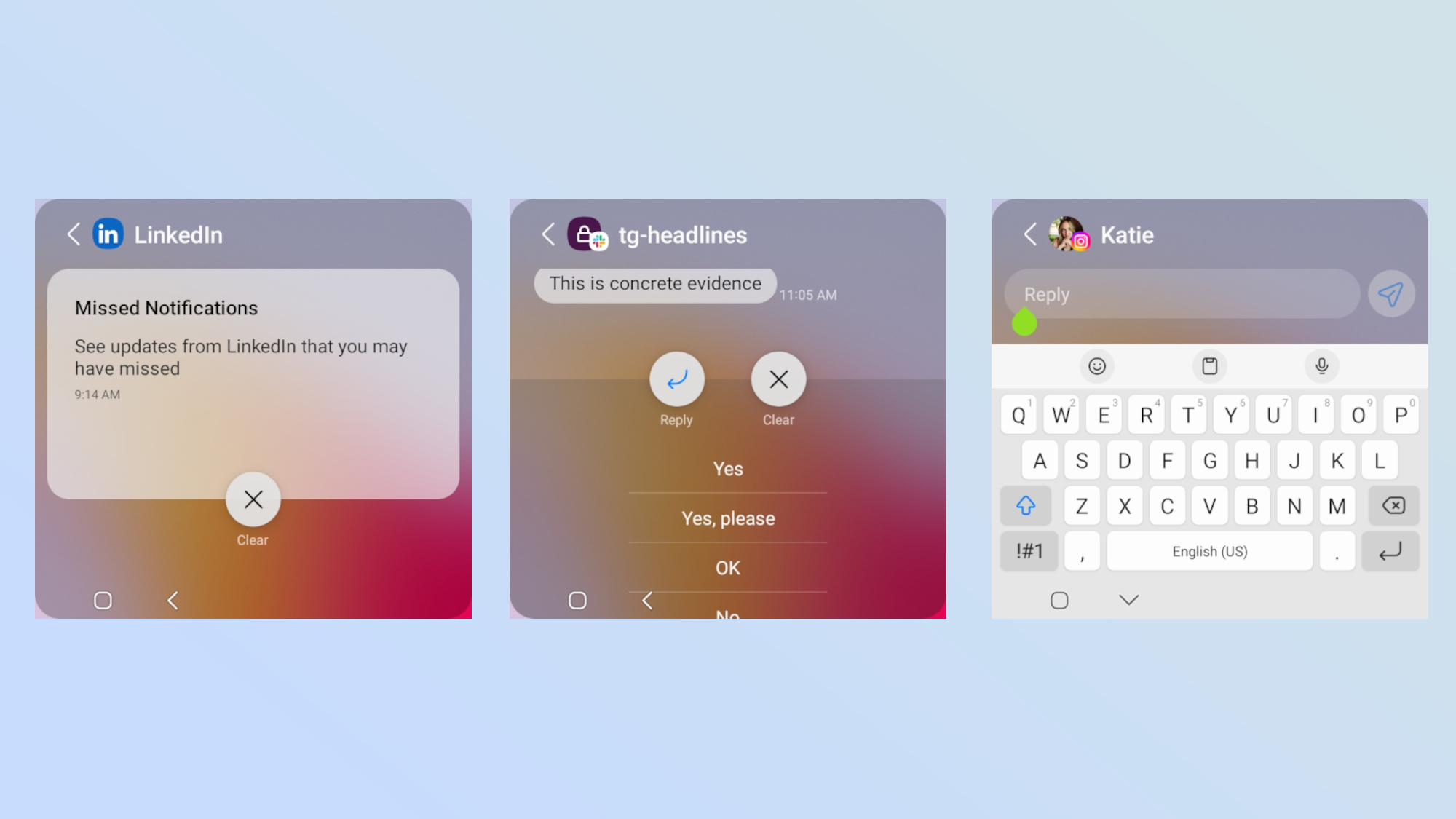
Apart from the added utility of the cover screen, I didn’t find a whole lot different with Samsung’s OneUI with the Z Flip 5. Of course, the same Flex Mode and Flex Cam experiences are present once again, which optimizes apps like YouTube when the phone’s folded halfway.
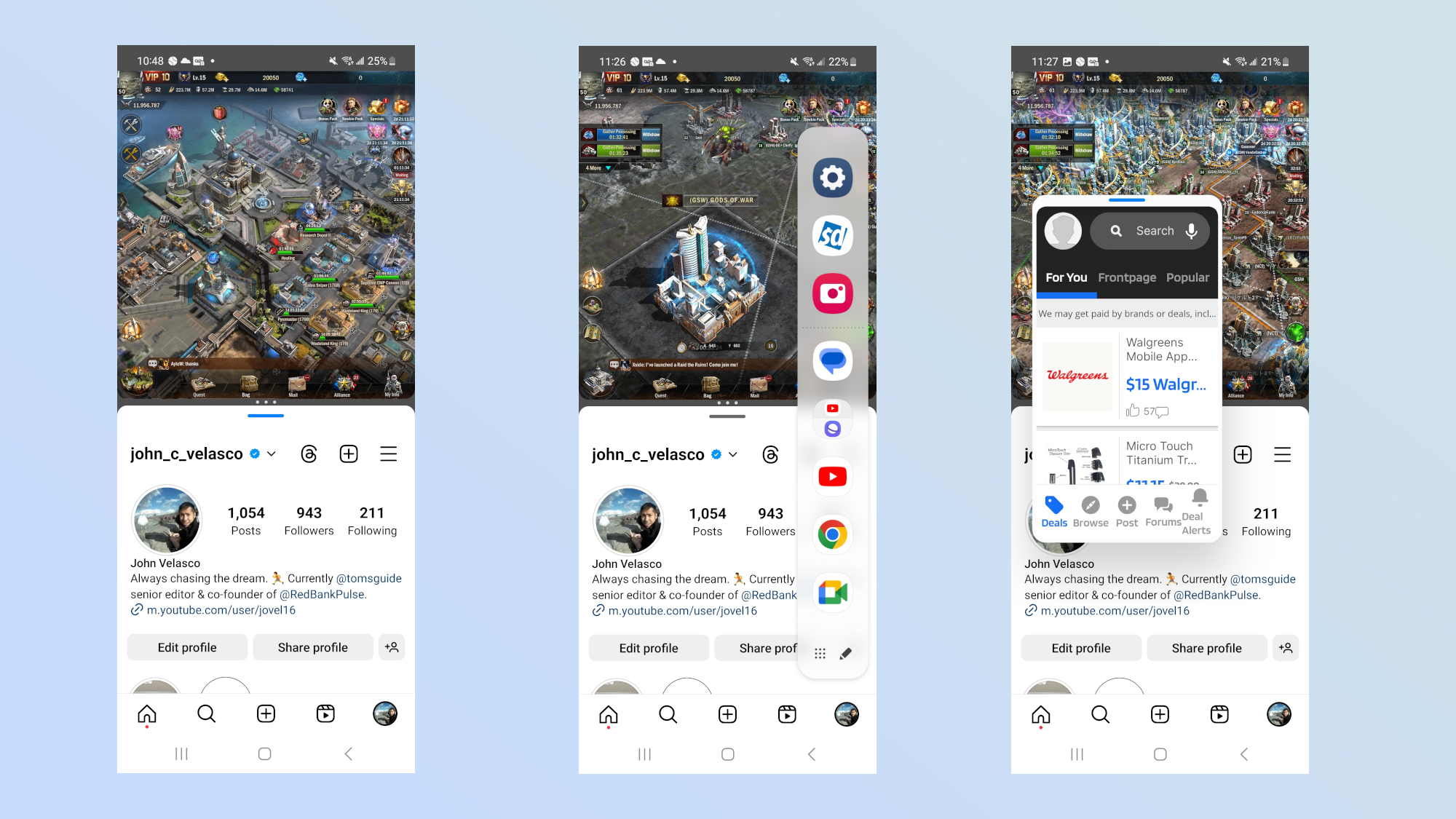
Over on the productivity side of things, I'm actually impressed that the phone can handle up to three apps simultaneously by using Multi Window and Pop Up View. Two apps are stacked on top of one another, while Pop Up View adds a third app in its own, resizable window. For users who require this level of multitasking, I think the Z Flip 5 does a good job at this — albeit, it's not as intuitive as how the Z Fold 5 handles multitasking.
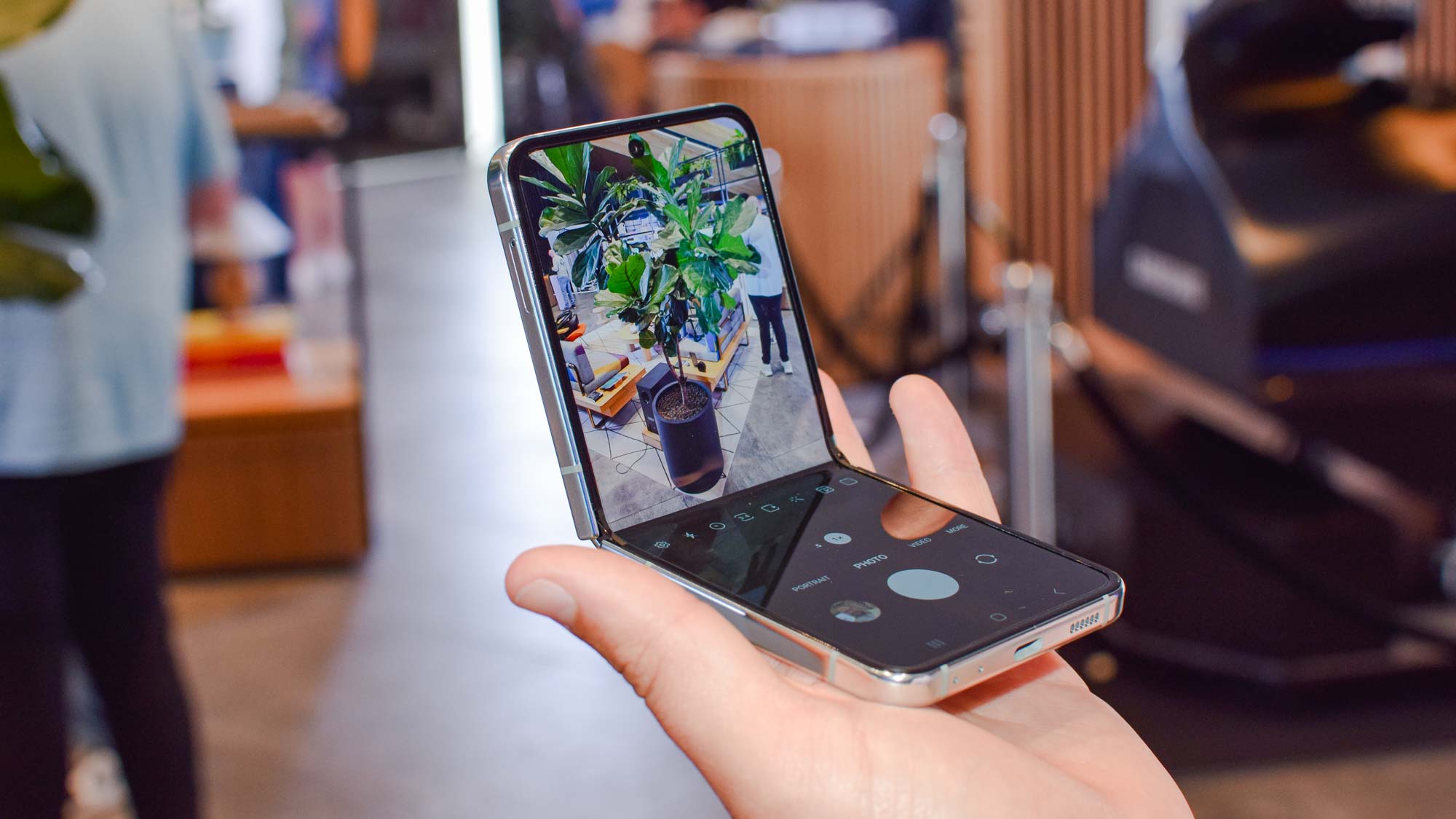
Samsung Galaxy Z Flip 5 review: Performance
Under the hood, the Samsung Galaxy Z Flip 5 is powered by Qualcomm’s Snapdragon 8 Gen 2 chip. I found navigating around the interface pleasantly smooth, which could also be attributed to the 120Hz refresh rate of the main display. Everything I did with the phone felt responsive, including when I was juggling around three apps all at the same time.
| Galaxy Z Flip 5+ | Motorola Razr+ | Galaxy Z Flip 4 | |
| CPU | Snapdragon 8 Gen 2 | Snapdragon 8 Plus Gen 1 | Snapdragon 8 Plus Gen 1 |
| Geekbench 5 (single core/multicore) | 1,354 / 4,288 | 1,320 / 4,134 | 1,291 / 4,015 |
| 3DMark Wild Life Extreme Unlimited (fps) | 18.03 | 16.57 | 16.23 |
| Adobe Premiere Rush (Mins:Secs) | 0:42 | 0:44 | 0:44 |
Over on the gaming side, the Z Flip 5 also exhibited excellent frame rates. It also rendered the world map in Ages of Origins with ease, despite being in a smaller window all while running two other apps. The synthetic benchmark tests also reveals its processing muscle versus the Razr+ and Flip 4, which both leverage the old Snapdragon 8 Plus Gen 1 chip.
Its scores of 1,354 and 4,288 for GeekBench 5's single-core and multi-core tests are a boost over the Flip 4 and Razr+, along with an even better gain over in graphics processing with an 18.03 fps (frames per second) score running 3DMark Wild Life Extreme Unlimited. It also beat out those other phones by a couple of seconds rendering video with Adobe Premiere Rush.
Samsung Galaxy Z Flip 5 review: Battery life
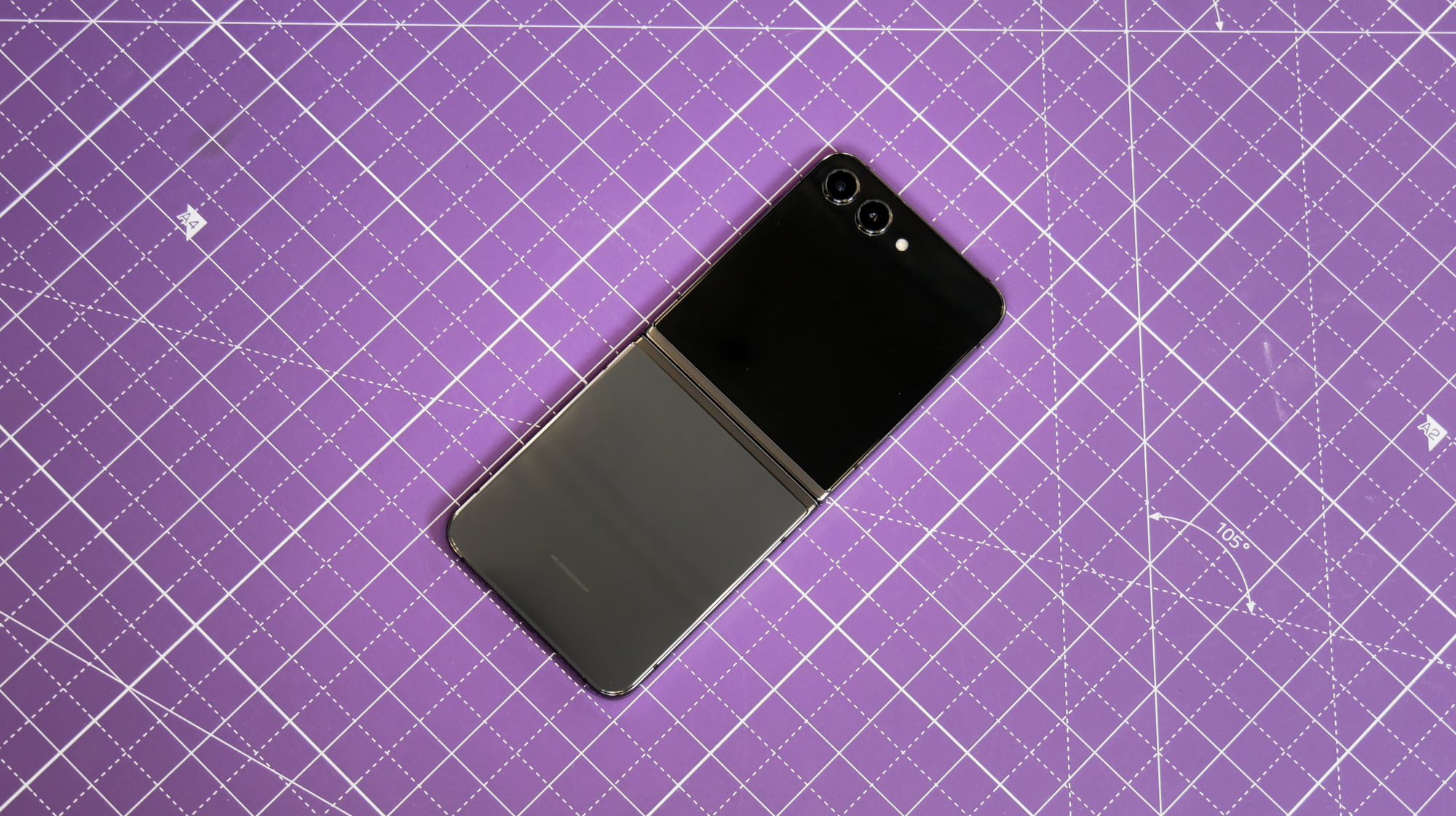
I know a lot of people were hoping to see a larger battery in the Z Flip 5, especially when the Z Flip 4 reached a smidge below 9 hours on our own battery benchmark test. Instead, it's packing the same sized 3,700 mAh battery cell as before, but its power efficient Snapdragon 8 Gen 2 chip made all the difference.
| Row 0 - Cell 0 | Battery size | Battery life (Hrs:Mins) | Charging rate |
| Z Flip 5 | 3,700 mAh | 9:53 | 25W (wired), 15W (wireless |
| Z Flip 4 | 3,700 mAh | 8:57 | 25W (wired), 15W (wireless |
| Razr+ | 3,800 mAh | 10:09 | 30W (wired), 5W (wireless) |
| Galaxy S23 Plus | 4,700 mAh | 12:28 | 45W (wired), 15W (wireless) |
| iPhone 14 Pro | 3,200 mAh | 10:13 | 20W (wired), 15W (MagSafe) |
In Tom's Guide's battery benchmark test, which involves continuous web surfing at 150 nits of screen brightness over 5G, the Galaxy Z Flip 5 lasted almost a full hour longer than its predecessor. Its tally of 9 hours and 53 minutes is good, but it still trails the Razr+'s even longer mark of 10 hours and 9 minutes. I'm not terribly concerned with that, since I still got in a full day's worth of use — ending at about the 15% before bedtime.
Still, the handsets on our best phone battery life list last 11.5 hours or more on a charge. For example, the Galaxy S23 Plus lasted 12:28, and it's the same price as the Z Flip 5. But it also packs a bigger battery.
Unfortunately, there’s no change whatsoever to the phone’s recharging. It’s still at an underwhelming 25W wired charging and 15W wireless charging.
Samsung Galaxy Z Flip 5 review: Verdict
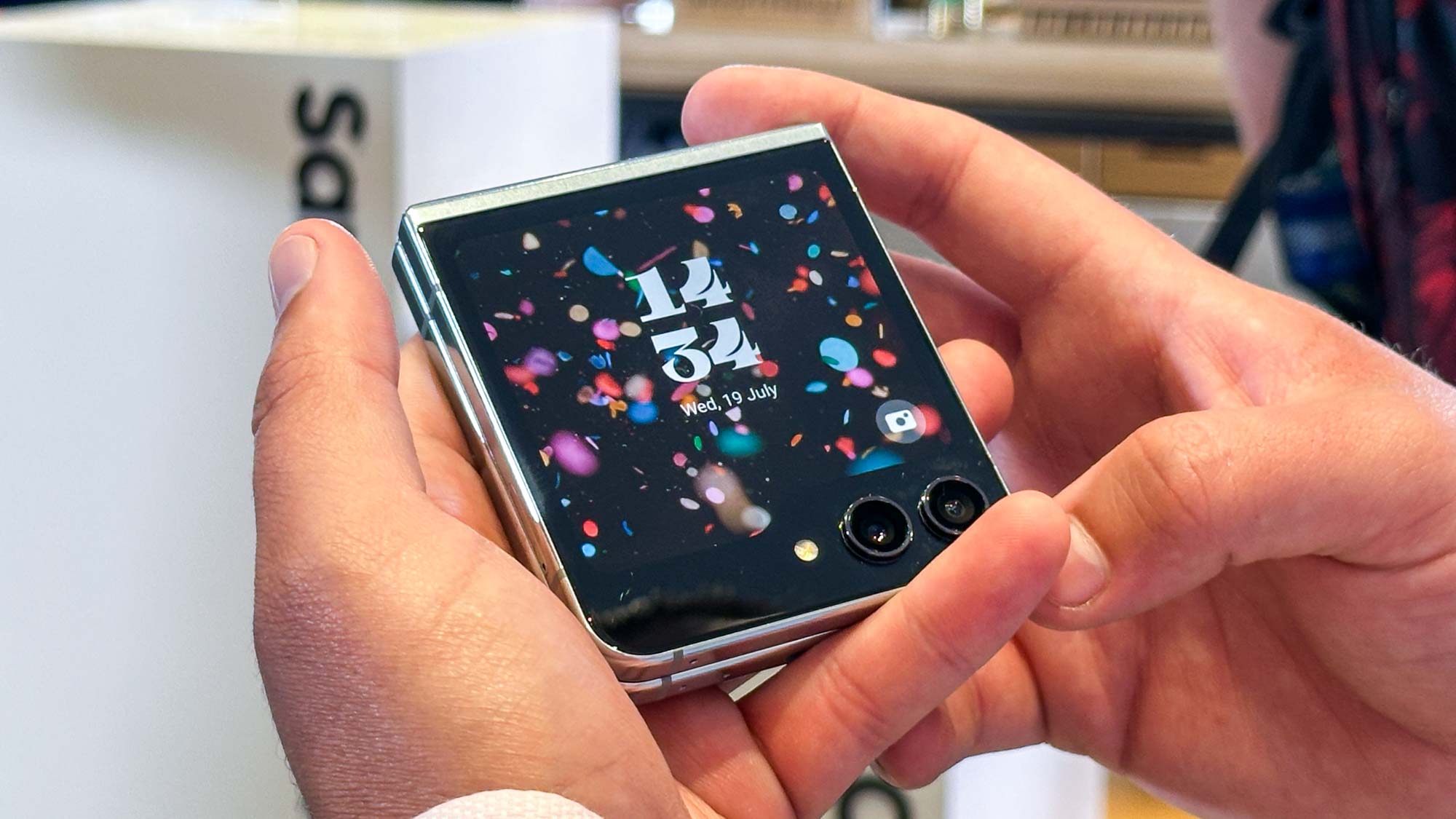
Funny how things change so suddenly. When the Galaxy Z Flip 4 launched last fall, there was no other comparable clamshell foldable to match it, but now it feels dated. With the arrival of the Galaxy Z Flip 5, however, it feels more like Samsung’s taking a cautious approach by giving us an iterative device.
I will say that it’s the more compelling Samsung foldable this time, since there are fewer notable changes with the Samsung Galaxy Z Fold 5. You get a larger cover display, a gap-free design and faster processor, even though you can't run every app on the external screen. It still tops every other clamshell foldable in the camera department, which is made more enjoyable by that Flex Window.
While it doesn’t seem like a meaty upgrade, Samsung does technically improve the phone in every way — so there's nothing wrong about that in my book.
More from Tom's Guide

John’s a senior editor covering phones for Tom’s Guide. He’s no stranger in this area having covered mobile phones and gadgets since 2008 when he started his career. On top of his editor duties, he’s a seasoned videographer being in front and behind the camera producing YouTube videos. Previously, he held editor roles with PhoneArena, Android Authority, Digital Trends, and SPY. Outside of tech, he enjoys producing mini documentaries and fun social clips for small businesses, enjoying the beach life at the Jersey Shore, and recently becoming a first time homeowner.
